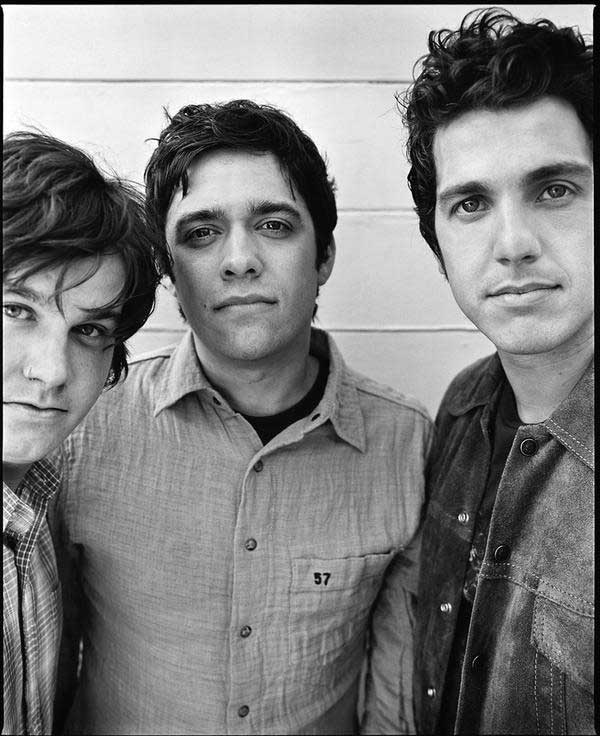Ingram Hill’s story could start in several places. We could begin at the University of Memphis in 2000, when vocalist/guitarist Justin Moore and drummer Matt Chambless first met and eventually formed the band.
Or we could go straight to 2002, when the quartet (rounded out by bassist Shea Sowell and guitarist Phil Bogard) self-eased their Until Now EP and toured endlessly in support, sharing stages with artists such as Jason Mraz, Michelle Branch, Lisa Marie Presley, Saliva, Lifehouse, Maroon 5 and O.A.R. As with years past, they did well over 200 shows in 2002 and garnered airplay on radio stations in Memphis and throughout the Southeast. Along the way, they drove three vans straight into the ground, with the last one going through five transmission changes alone. “We hadn’t been home for more than 10 days at a time that year,” says Chambless. “But while it’s easy to groan about being away so much, we’ve had the opportunity to see the country and connect with audiences from Chattanooga to Charlottesville to New York City.”
Their blue-collar work ethic saw Until Now rocket all the way to #5 on the Memphis retail charts, a remarkable feat for a rock band in a town dominated by country music and R&B acts. Equally impressive, the band sold more than 10,000 copies of the EP, and a sizeable chunk of those transactions took place during their electrifying live shows, including 385 copies sold at a gig in Michigan and 200 at a stop in Washington. “To go into a new town and play for an audience that’s never heard of you, and then have them buy your CD afterward, is an amazing feeling,” says Bogard.
The latest chapter of the band’s story starts with new album June’s Picture Show. Fittingly enough, the record marks a new beginning for the Tennessee natives, as it’s their major label debut and in terms of songwriting and sonics, betters its predecessor by a country mile. The band entered the studio with producer Rick Beato (Billionaire, Flickerstick), road-tightened, revitalized and eager to record and it shows. The result is an album that feels fresh and alive, written and delivered by a group with a deep reverence for classic rock.
“I remember listening back to the final mixes and thinking, ‘Wow, I can’t believe that’s us,’” says Bogard. “It turned out so much better than we hoped it would. We just sat in our van and kept playing it over and over. It just flat-out rocks.”
Ingram Hill initially issued June’s Picture Show this past fall, planning to support it with another round of DIY promotion and perpetual touring. But within a few weeks of the album’s ease, Hollywood Records signed the band and agreed to re-ease it in early 2004.
“We’ve worked really hard for everything we’ve achieved so far, but there’s only so much we can do on our own,” says Moore. “Now we’ve got a major label behind us and it feels really good.”
Drawing from influences ranging from Elvis to the Black Crowes, June’s Picture Show rattles and rolls with bluesy rock fire. The arrangements are smart and taut and filled with hummable melodies both tender and tough. Chambless and Sowell provide the foundation, driving upbeat tracks like “Never Be The Same” and “Hanging Around Again,” and then locking into smoky, laidback grooves on “To Your Grave” and “Maybe It’s Me.” Bogard soars above them, his guitar work an earthy blend of acoustic roadhouse soul and melodic barroom rock. Vocalist Moore brings June to life, offering warmly sung meditations on loneliness (“Will I Ever Make It Home”), unrequited love (“Chicago”) and family (“The Captain”). In “To Your Grave,” he tells the somber, unsettling story of a guy who kills his girlfriend and then himself. With “On My Way,” “Waste It All On You” and “What If I’m Right,” the singer sifts through the wreckage of a broken ationship and looks to the renewal that follows. According to Moore, the songs were inspired by an old fling. “I was devastated when it ended, but I’m thankful for it now,” he laughs. “It’s provided me with tons of material. I look at it as an emotional investment.”
